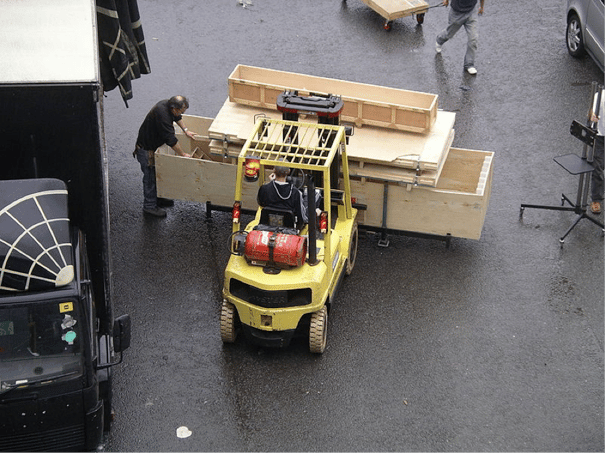
Can the workhorse forklift become an agent of change? YES!
When envisioning warehouses, many picture the old-fashioned manual model of operation. In this model, a worker that picks orders uses a cart, forklift and other standard methods of moving inventory. Fulfilling orders with forklifts or carts is the job of workers who go to picking locations where they put the inventory together and drive or move it manually to the packing station or shipping dock.
Enter the Internet of Things (IoT)...
Many consider the IoT the “fourth industrial revolution.” IoT includes a vast network of physical objects or "things" embedded with electronics, software, sensors, and network connectivity, which enables these objects to collect and exchange data. The IoT market is large and growing and some predictions claim that the number of devices will reach 20 billion "things" by 2020.
As Edzard Overbeek, Senior Vice President, Cisco Services observes, “The IoT will revolutionize decision making – we know that. By connecting the previously unconnected, we create incredible potential for businesses to improve the speed and accuracy of decision making through the analysis and application of digital information. It enables dramatically faster cycle times, highly dynamic processes, adaptive customer experiences and--through the ecosystem of people and technology--the potential for breakthrough performance gains."
To harness the Internet of Things in warehousing, the role of IT must change on the factory floor. One example of how IoT has an expanded role in the storage industry is the use of Smart Forklifts.
Already, programmers and manufacturers have developed “smart” forklifts that are on the market and used in conjunction with a well-designed warehouse management system (WMS). Facilities using intelligent forklifts have quickly become semi-automated.
What Intelligent Forklifts Can Do
These modern forklifts encourage the inclusion of new processes in warehouse operation. When integrated with a WMS, the fork on the forklift raises and lowers more time-efficiently.
The WMS sends a signal to a forklift telling it to go to a particular picking location where it receives a signal that the height of the stored pallet for pick-up is at the 3-foot, 6-foot, or any other storage level; the forks adjust as the forklift is traveling to that location. When in transit, the operator of the forklift pushes a control console button that allows the forklifts to move at the safest maximum speed – usually faster by far than the forklift operator dares to drive.
Intelligent Forklift Features
Intelligent forklifts also have diagnostics which trigger alerts when repairs or scheduled routine maintenance is due. These forklifts can also feature:
Speed controls
- Anti-slip technology monitoring wheel spin provides improved traction on slippery and slick floors:
- Forklift speed optimization is an important feature for forklift safety. An example includes the use of Radio Frequency ID tags (RFID) where tags are embedded in the floor to warn the forklift and its operator that the forklift is in a busy area of the warehouse where workers are walking across the floors. The RFID tag alerts the forklift and it cannot exceed a previously set speed.
- When picking mixed cases, forklifts communicate with pickers wearing voice systems. An intelligent forklift follows a picker down an aisle, using its forks to lift the case to the proper ergonomic height for the picker to lift it. When it is signaled, it autonomously takes the goods to the shipping dock for unloading.
Smart machines, like these forklifts, drive change in operations that reduce order picking time & labor costs, improve productivity, and increase safety - thereby reducing workers compensation claims. To remain competitive, warehouses would do well to invest in smart devices and the Internet of Things.
To further enhance your warehouse operations please contact StayLinked to try the next generation in Terminal Emulation - get your free preview of SmartTE today!


